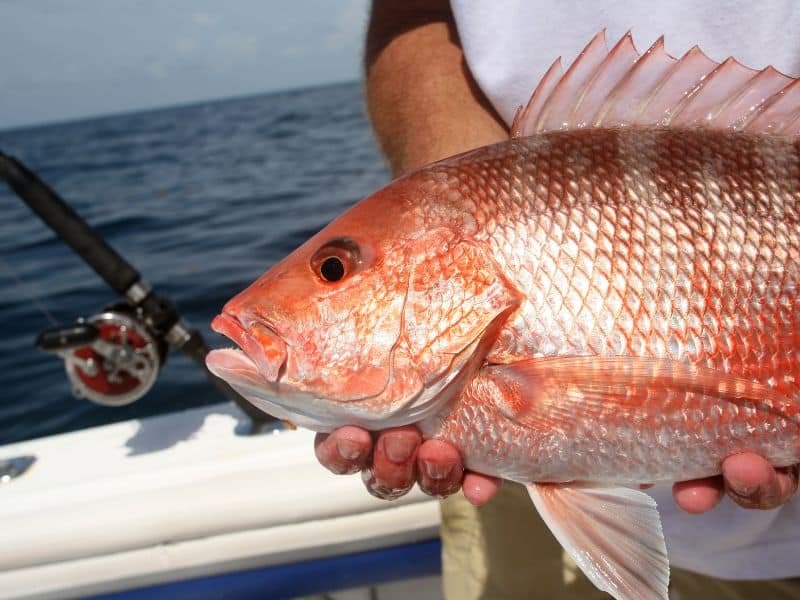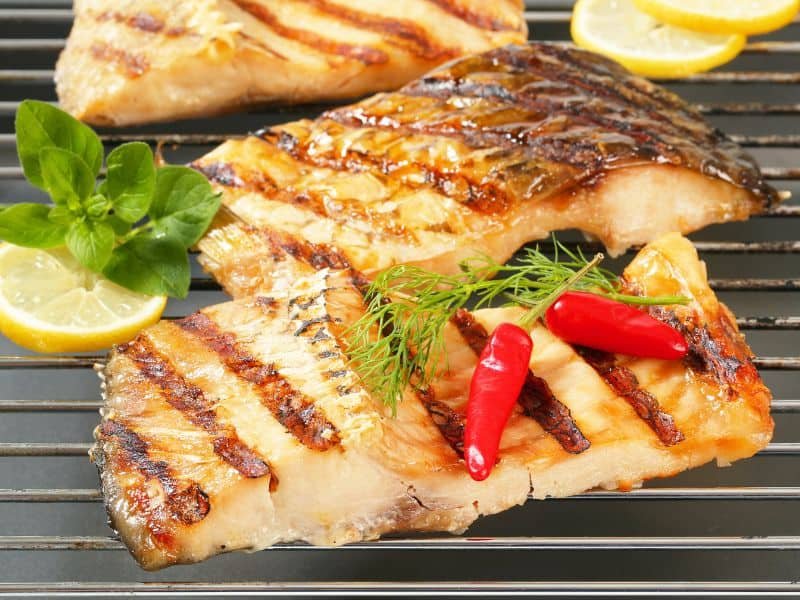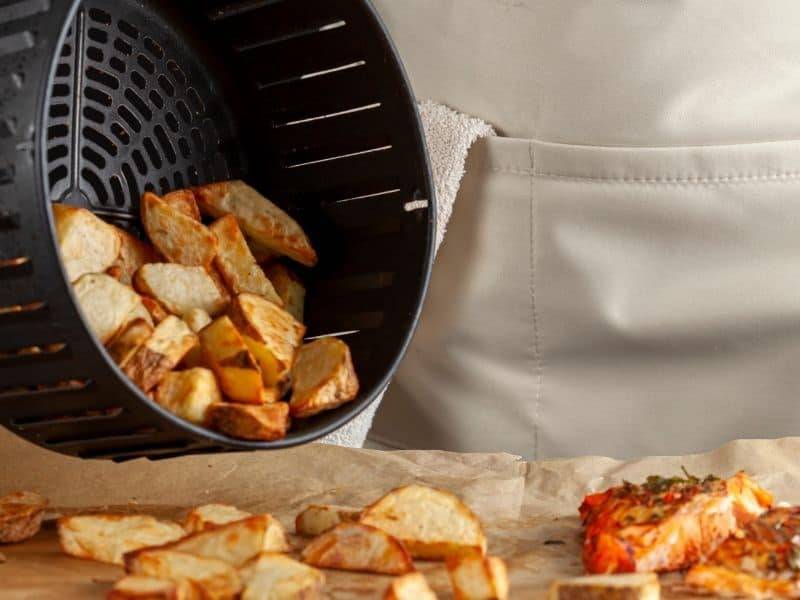Can’t decide between Imelda Fish (Big Head Carp) and Maya Maya (Red Snapper)? We feel you! Let’s dive into the flavors and textures of these two fish favorites. Get ready for a flavor showdown as we explore the deliciousness that awaits.

What is Imelda Fish?
Imelda fish or Karpa is the local Philippine name for Big Head Carp fish.
This freshwater species is known for its, well, big head! Along with its sleek and elongated body, the Big Head Carp stands out in the underwater world. It can grow quite large, reaching lengths of up to a meter and tipping the scales with its substantial weight.
What sets the Big Head Carp apart is its appetite. These fish are not picky eaters—they’ll gobble up almost anything in sight. From plants and algae to small aquatic creatures, they’re not afraid to indulge in a wide-ranging menu.
However, their adaptability and prolific breeding can pose challenges when introduced to new habitats, potentially impacting native fish populations. So while their big heads make them interesting, it’s essential to keep an eye on their ecological impact.

What is Maya Maya?
Maya Maya fish, also known as the red snapper, is a prized marine species that swim in tropical and subtropical waters.
With its distinctive red coloration, this fish catches the eye and the taste buds. Its elongated body and pointed snout give it a sleek appearance that’s hard to miss.
What makes Maya Maya fish so special is its delicious flesh. Firm, moist, and flaky, it offers a delicate yet mildly sweet flavor that seafood lovers adore. Whether you grill it, bake it, fry it, or steam it, Maya Maya fish always delivers a delightful dining experience.
It’s no wonder this versatile fish is a sought-after catch in markets, restaurants, and coastal communities, where its vibrant presence adds a touch of culinary brilliance.

Texture and Taste
Texture
Imelda Fish: When it comes to texture, the Big Head Carp brings the meatiness. Its flesh is firm and dense, giving you a satisfying bite. Whether you’re grilling, frying, or steaming it, you’ll feel the substantial texture that holds up well during cooking. The Big Head Carp’s texture is robust and hearty, making each mouthful a substantial experience.
Maya Maya: Now, let’s talk about Red Snapper. This fish brings a whole different texture to the table. Its flesh is tender and delicate, practically melting in your mouth. When you take a bite of Red Snapper, you’ll experience its light and flaky texture. It’s the kind of fish that effortlessly breaks apart into delicious flakes, offering a more delicate and gentle texture that’s perfect for baking or steaming.
Taste
Imelda Fish: When it comes to taste, the Big Head Carp keeps it mild and clean. Its flavor is subtly sweet, without being overpowering. This mildness allows the Big Head Carp to absorb the flavors of the seasonings and spices you use during cooking. So whether you’re adding a tangy marinade or some aromatic herbs, the Big Head Carp will take on those flavors, resulting in a versatile and adaptable taste.
Maya Maya: Get ready for a burst of flavor with Red Snapper. This fish brings a distinct taste to the table. It offers a sweet and slightly nutty flavor that’s complemented by a hint of the sea. The natural sweetness of Red Snapper shines through, giving each bite a delightful touch. Its unique flavor profile stands out, making it a favorite among seafood enthusiasts who enjoy that signature taste experience.

How to Cook
When it comes to cooking Imelda Fish (Big Head Carp) and Maya Maya (Red Snapper), there are various methods that bring out the best flavors.
Here are a few popular cooking techniques and dishes for each fish:
Imelda Fish (Big Head Carp)
- Grilling: Imelda Fish can be deliciously prepared by grilling. Marinate the fish with your favorite herbs, spices, and a squeeze of lemon or lime juice for added freshness. Grill it over medium heat until it’s cooked through, resulting in a smoky and flavorful dish.
- Steaming: Steaming Imelda Fish is a popular method that preserves its natural flavors and moist texture. Place the fish on a steamer rack, season with salt, pepper, and some ginger slices. Steam until the flesh is tender and flakes easily, creating a light and healthy dish.
Popular dishes with Imelda Fish include:
- Sinigang: This Filipino sour soup combines the Imelda Fish with a tangy tamarind broth, assorted vegetables, and other aromatic ingredients for a flavorful and comforting meal.
- Escabeche: Imelda Fish is often cooked in a sweet and tangy sauce made with vinegar, sugar, and various spices. It’s then garnished with colorful bell peppers, carrots, and onions, creating a vibrant and appetizing dish.
Maya Maya (Red Snapper)
- Baking: Red Snapper is fantastic when baked whole or as fillets. Season the fish with herbs, garlic, and lemon or lime zest, then bake it in the oven until the flesh is flaky and tender. The baking method helps to retain moisture and enhances the natural flavors of the fish.
- Pan-frying: Pan-frying Maya Maya results in a crispy exterior and moist flesh. Dredge the fish in a light coating of flour or breadcrumbs, then pan-fry it until golden brown on both sides. Serve it with a squeeze of lemon or a side of tartar sauce for added zest.
Popular dishes with Maya Maya include:
- Grilled or Steamed Maya Maya: Red Snapper is often grilled or steamed and served with a side of steamed vegetables, soy sauce, ginger, and a drizzle of sesame oil. This simple yet flavorful preparation highlights the delicate taste of the fish.
- Fish Fillet: Red Snapper fillets are commonly used to make fish fillet dishes. The fillets are breaded, fried until crispy, and served with a side of tartar sauce or a tangy lemon butter sauce.
Remember, these cooking methods and dishes are just a starting point, and you can get creative by adding your own twists and flavors to suit your taste preferences. Enjoy exploring the culinary possibilities with Imelda Fish and Maya Maya!
Tips
Selecting and Buying
- Freshness: Look for fish with clear, bright eyes, shiny skin, and a fresh, mild scent. Avoid fish with cloudy eyes, dull skin, or a strong fishy odor.
- Whole Fish: When buying a whole fish, ensure that the scales are intact, the flesh is firm to the touch, and the gills are bright red.
- Fillets: If purchasing fillets, make sure they are moist, with no signs of discoloration or dryness.
Preparing
- Cleaning: Rinse the fish thoroughly under cold water and pat it dry with paper towels.
- Scaling: If the fish is not scaled, use a fish scaler or the back of a knife to remove the scales by scraping from tail to head.
- Gutting: Cut open the belly of the fish and remove the guts. Rinse the cavity with water to ensure it’s clean.
Cooking
- Seasoning: Both fish can be enhanced with various seasonings like herbs, spices, garlic, ginger, citrus juices, or soy sauce. Experiment with different flavor combinations to suit your taste.
- Cooking Methods: Imelda Fish and Maya Maya are versatile and can be cooked using methods such as grilling, baking, steaming, pan-frying, or even making soups and stews.
- Cooking Time: Fish is cooked when the flesh turns opaque and easily flakes with a fork. Be careful not to overcook, as it can result in a dry and less flavorful dish.
Storing
- Fresh Fish: If not cooking immediately, store the fish in the refrigerator. Wrap it tightly in plastic wrap or place it in an airtight container to prevent moisture loss and contamination. Use within 1-2 days.
- Freezing: To freeze the fish, wrap it tightly in plastic wrap and place it in a freezer-safe bag or container. Properly frozen fish can be stored for up to 3 months.
- Thawing: When ready to use frozen fish, thaw it slowly in the refrigerator overnight or use the defrost function of your microwave. Avoid thawing at room temperature to prevent bacterial growth.
Remember, always trust your senses when selecting fish, and follow proper food safety practices to ensure a safe and enjoyable culinary experience. So go ahead, choose, prepare, cook, and store these fantastic fish with confidence!












